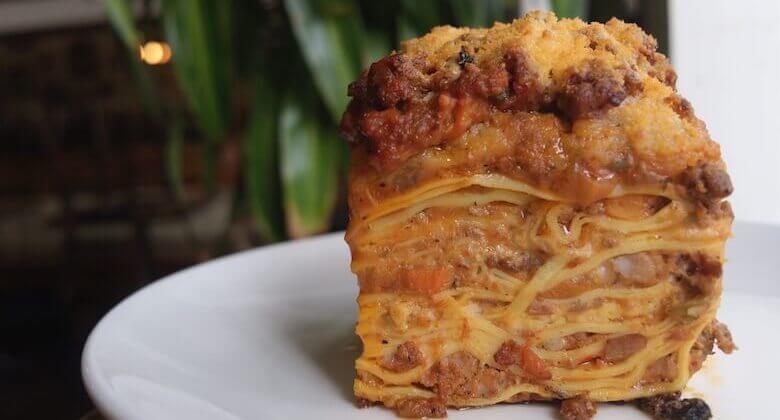
I’m not a splitsies person. I like to pick my own entree and eat it. Unless we’re at a very special restaurant where it’s imperative to try as many things as possible, I’m not going to give you half the dinner I carefully stalked for a week on the online menu in exchange for whatever (lesser) thing you ordered without my input. We can split an app, but after that, it’s every man for themselves.
I had just given that schpiel to friend sitting across from me at Aita Trattoria in Crown Heights when the mains arrived and I immediately wanted to eat both my words and someone else’s dinner. Rarely do I look around a table and not feel confident that I’ve ordered the thing I’ll enjoy the most, but in front of the friend who had just politely listened as I slandered the concept of sharing sat the most beautiful and impossibly many-layered slab of lasagna I had ever seen. I’d screwed up, and I was going to have to swallow my pride and ask him for a bite. That bite was so good that I ordered the very same $17 lasagna on Seamless for dinner the next night.
The key to Aita’s lasagna is the layers. Instead of the thick striations of noodle, chunky meat sauce and ricotta that constitute the standard American conception of the dish, chef Roberto Aita’s take uses thin layers of pasta, béchamel and meaty, savory bolognese, stacked tightly together and at least four inches high like an edible reimagining of a crepe cake, topped with a generous layer of grated Parmesan. The last time I had the dish, I tried to count the pasta layers, but got lost somewhere north of a dozen.
Because the noodles and fillings are thin, the flavors meld together better than they do in other recipes; instead of having to ensure you scoop up a combination of sauce, cheese and pasta for each forkful, every bite here comes pre-loaded with the perfect proportions. Aita’s presentation also has impressive structural integrity, even though the chef substitutes the traditional ricotta for more liquid with the béchamel. The omnipresent pasta absorbs the excess and all of its flavors, but it’s somehow never soggy or limp. The dish holds up, physically and beyond.
I had always thought of lasagna as a relatively simple, homemade comfort food, one that it never occurred to me to order it in restaurants—it was too accessible and too easily re-created in my own kitchen to justify the opportunity cost of ordering it instead of something more complex. Like the most successful restaurant dishes always do, Aita’s version immediately broadened my conception of what lasagna could be, as well as how much care, skill and attention to detail would be required to make the best, most satisfying version of it. At Aita, the lasagna doesn’t have to rely on nostalgia because the preparation and flavors are so impressive.



